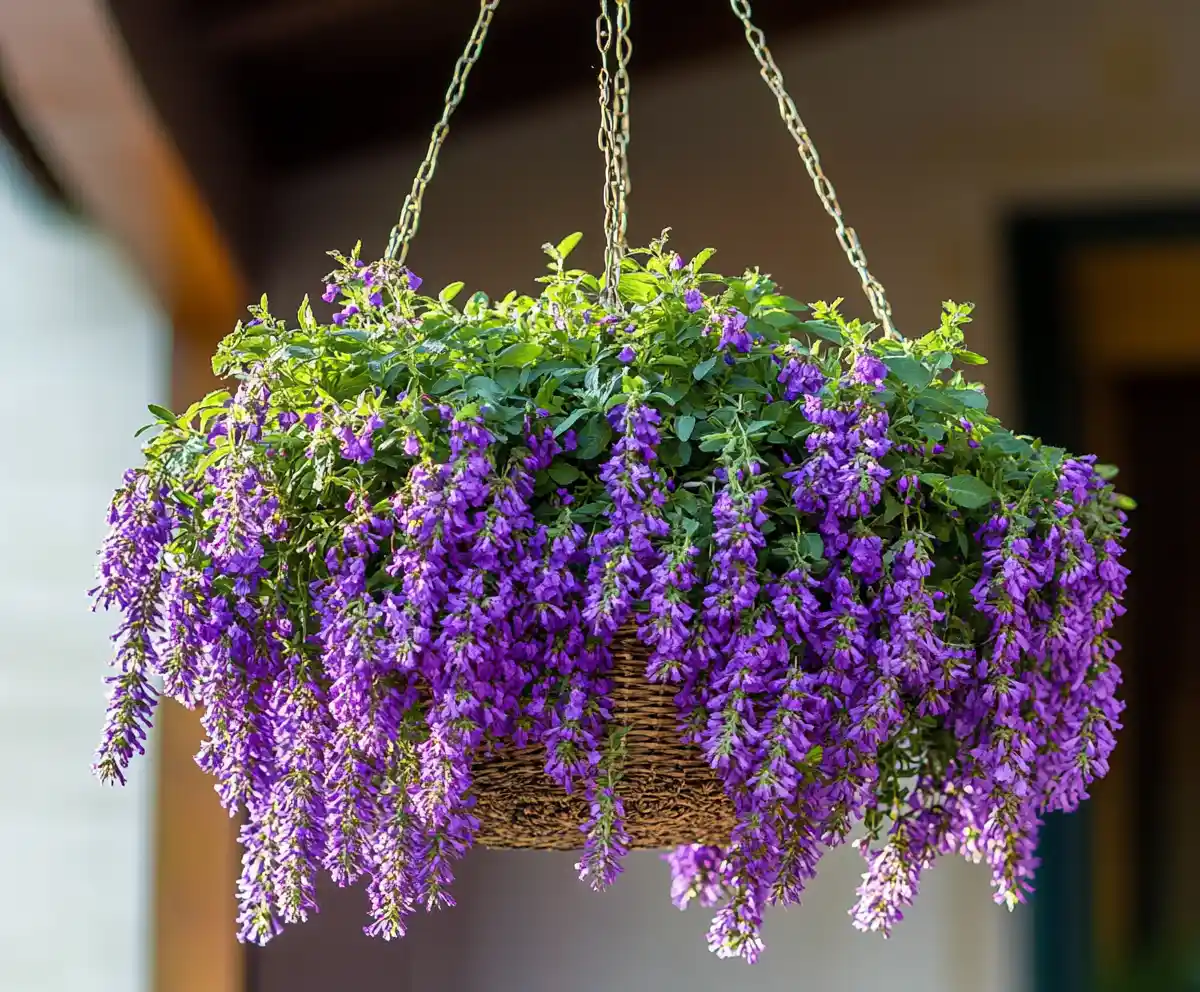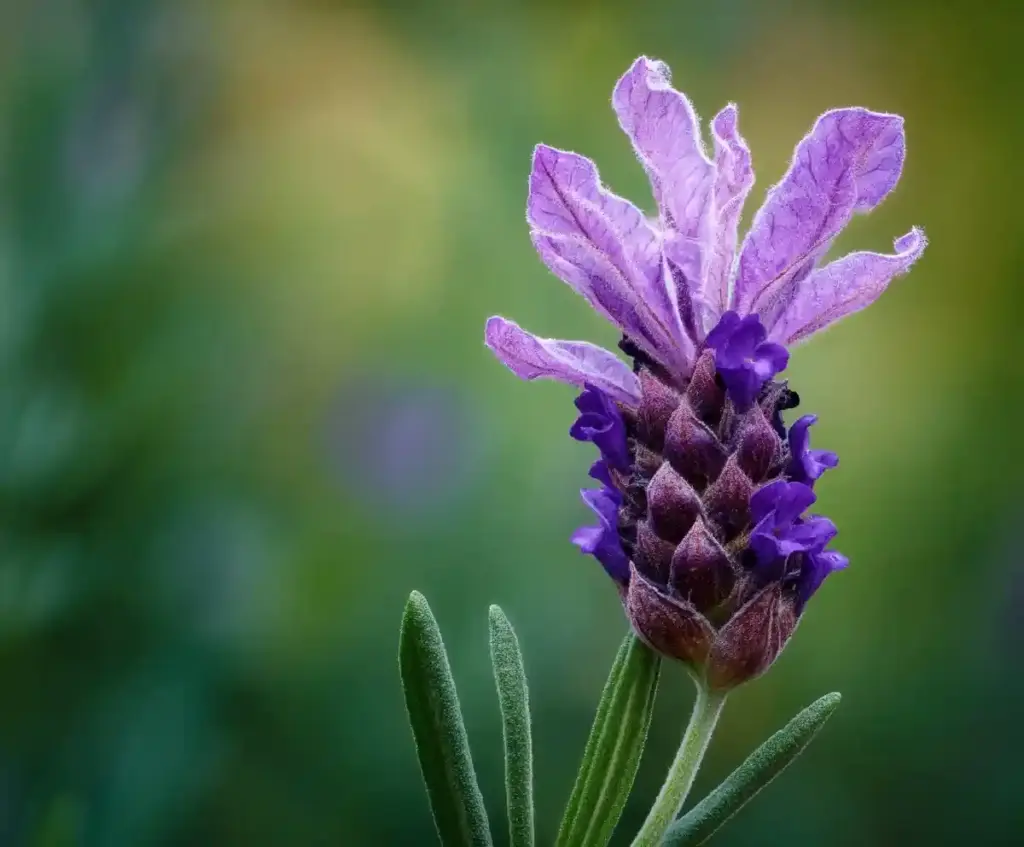Lavender isn’t just a pretty addition to your garden — it’s a celebration of color, fragrance, and life. A well-designed lavender flower bed can transform any outdoor space into a calming retreat while drawing in helpful pollinators like bees and butterflies.
Whether you’re a seasoned gardener or just starting your green-thumb journey, lavender beds offer endless creativity and charm. From rustic layouts to structured designs, there’s a style for every gardener to fall in love with. Let’s dive into 10 gorgeous lavender bed inspirations that will help you craft your own purple paradise!
Cascading Lavender Planters
If you’re looking to add a whimsical touch to your outdoor space, cascading lavender planters are a stunning option. By planting lavender in hanging pots or tiered planters, you can create a waterfall of purple blooms that spills gracefully downward, instantly enhancing patios, balconies, or small garden nooks.
These planters are perfect for gardeners with limited ground space but a love for bold, fragrant displays. Lavender thrives in containers with good drainage and plenty of sunlight, making maintenance fairly simple.
To keep your lavender lush and flowing, trim regularly to encourage fuller growth and prevent legginess. Imagine relaxing under a soft lavender “curtain,” enjoying the beauty and calming scent all season long.
Tips for Success:
- Choose compact or trailing lavender varieties like Lavandula angustifolia.
- Ensure pots have excellent drainage holes.
- Water deeply but infrequently, letting the soil dry out between waterings.
- Place planters where they’ll receive at least 6 hours of direct sunlight daily.
Lavender and Stone Pathway
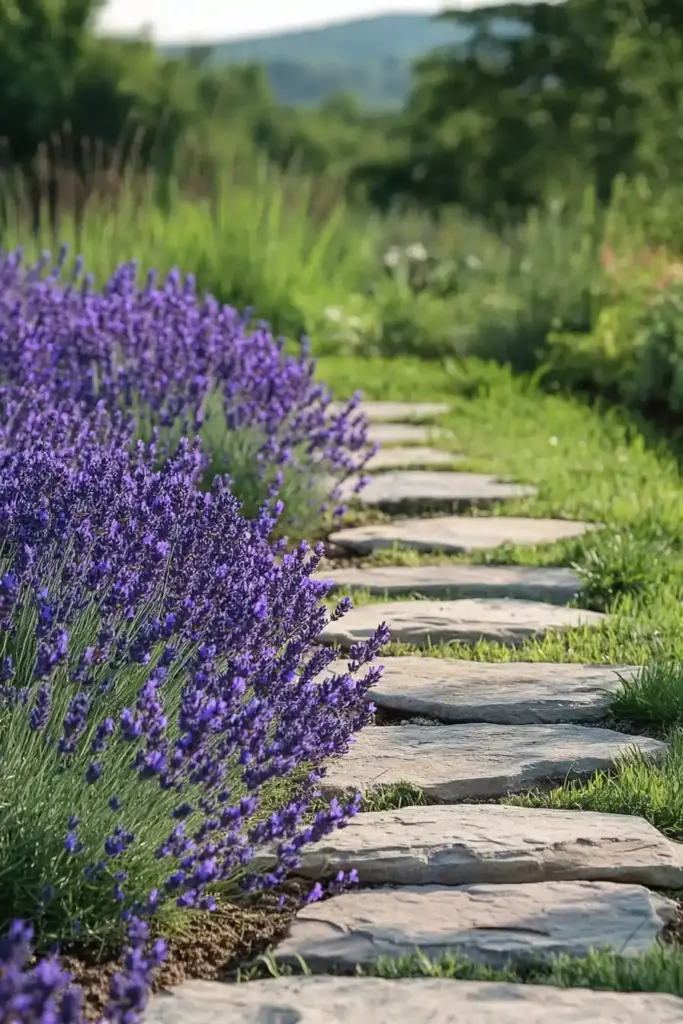
Imagine wandering down a charming stone pathway, flanked on both sides by lush, blooming lavender flower beds. The soft, earthy tones of the stones contrast beautifully with the vibrant purples of the lavender, creating a truly enchanting garden experience.
A lavender-lined stone path doesn’t just look stunning — it also engages multiple senses. As you stroll, you’ll catch the soothing fragrance of lavender with every step, making your garden feel like a peaceful escape.
To enhance the effect, choose a mix of stone shapes for a natural look, and let the lavender plants gently spill over the edges for a romantic, inviting feel.
Pro Tips for Designing Your Path:
- Use curved paths to create a more organic, flowing layout.
- Space lavender plants about 12–18 inches apart for a full, lush border.
- Mix in low-growing ground covers, like creeping thyme, for extra texture.
- Choose drought-tolerant stone companions like sedum if you want added variety.
Mix of Lavender Varieties
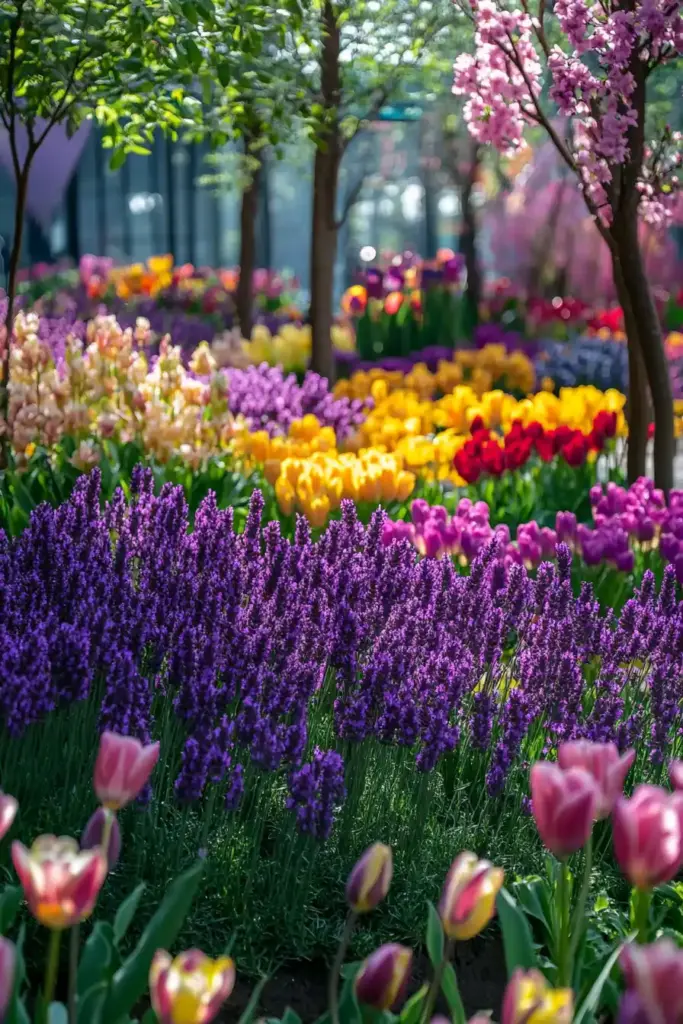
Why settle for just one type of lavender when you can create a vibrant tapestry by combining several? Designing a lavender flower bed with a mix of varieties brings layers of color, texture, and even subtle scent differences to your garden.
From the deep purple spikes of English lavender (Lavandula angustifolia) to the pale, airy blooms of Spanish lavender (Lavandula stoechas), blending types creates a dynamic and ever-changing visual feast. Plus, different bloom times mean your lavender display lasts longer through the seasons!
How to Create a Stunning Mix:
- Combine tall and compact varieties for depth and movement.
- Group plants in odd numbers (like 3 or 5) for a natural look.
- Choose a color palette — from deep violet to soft pastel — to match your garden’s theme.
- Plant early, mid, and late bloomers to enjoy lavender from spring to late summer.
This layered approach not only enhances beauty but also attracts a wider variety of pollinators, turning your garden into a lively, fragrant haven.
Rustic Wooden Raised Beds
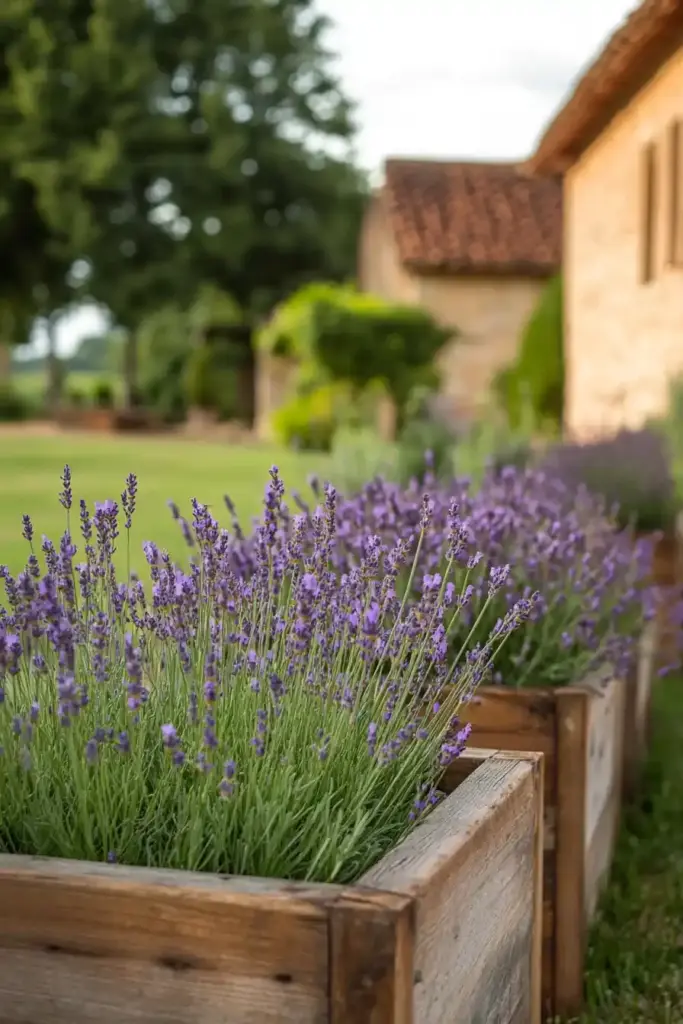
There’s something undeniably charming about showcasing a lavender flower bed in rustic wooden raised beds. The natural texture and warmth of weathered wood beautifully complement the soft purples of lavender, creating a cozy, cottage-garden feel.
Raised beds aren’t just about looks — they offer practical benefits, too. Lavender prefers well-draining soil, and raised beds help prevent waterlogged roots, especially in areas with heavy rainfall. Plus, they make garden maintenance easier by reducing bending and keeping weeds at bay.
Tips for Building Rustic Lavender Beds:
- Use untreated, rot-resistant woods like cedar or redwood.
- Fill beds with sandy, slightly alkaline soil for optimal lavender health.
- Space plants generously (about 18–24 inches apart) to allow airflow.
- Add gravel mulch on top to improve drainage and reflect heat.
Position your rustic beds as focal points in the garden, and you’ll have a centerpiece that looks gorgeous year-round — even when the lavender isn’t in full bloom!
Symmetrical Lavender Borders
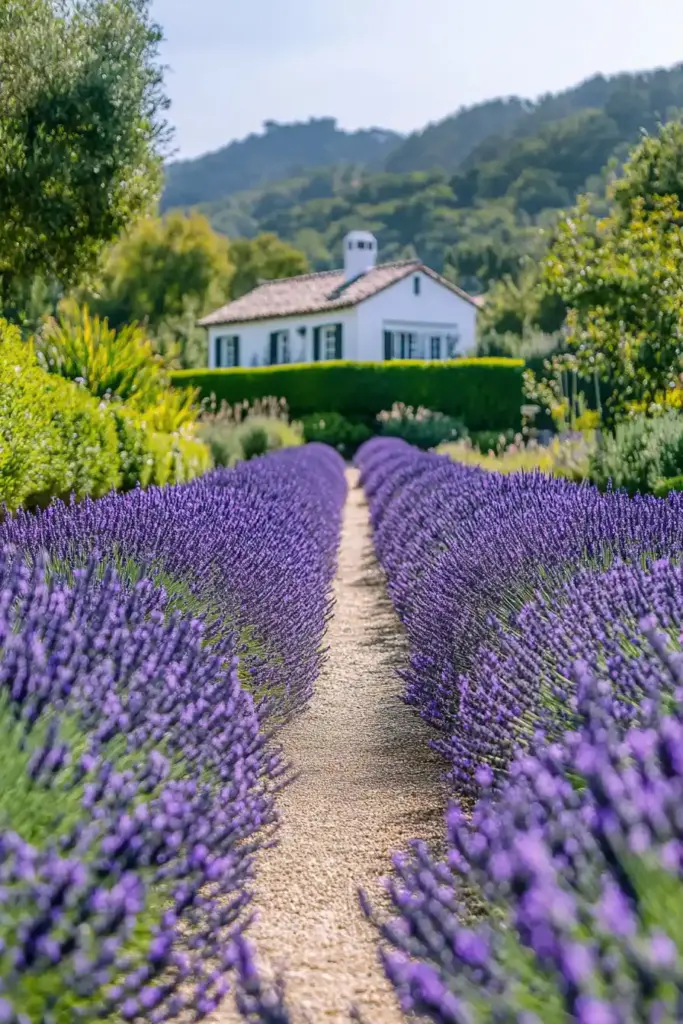
If you’re drawn to gardens that feel peaceful, orderly, and elegant, symmetrical lavender flower bed borders are a fantastic choice. Neatly lined rows of lavender on either side of a path create a formal yet inviting atmosphere, leading the eye and encouraging leisurely strolls.
The clean, mirrored look emphasizes structure and calm, making it ideal for traditional or Mediterranean-style gardens. Plus, the consistent height, color, and texture of lavender bring unity to the overall design.
How to Achieve Perfect Symmetry:
- Use a single lavender variety to maintain a consistent appearance.
- Space plants evenly — about 12–18 inches apart — for a dense, uniform border.
- Trim regularly to maintain shape and encourage bushier growth.
- Pair lavender borders with gravel or stone paths for a classic, timeless look.
This layout isn’t just for show — the heavenly scent and steady hum of pollinators make it a living, breathing experience every time you step outside.
Lavender Interspersed with Herbs
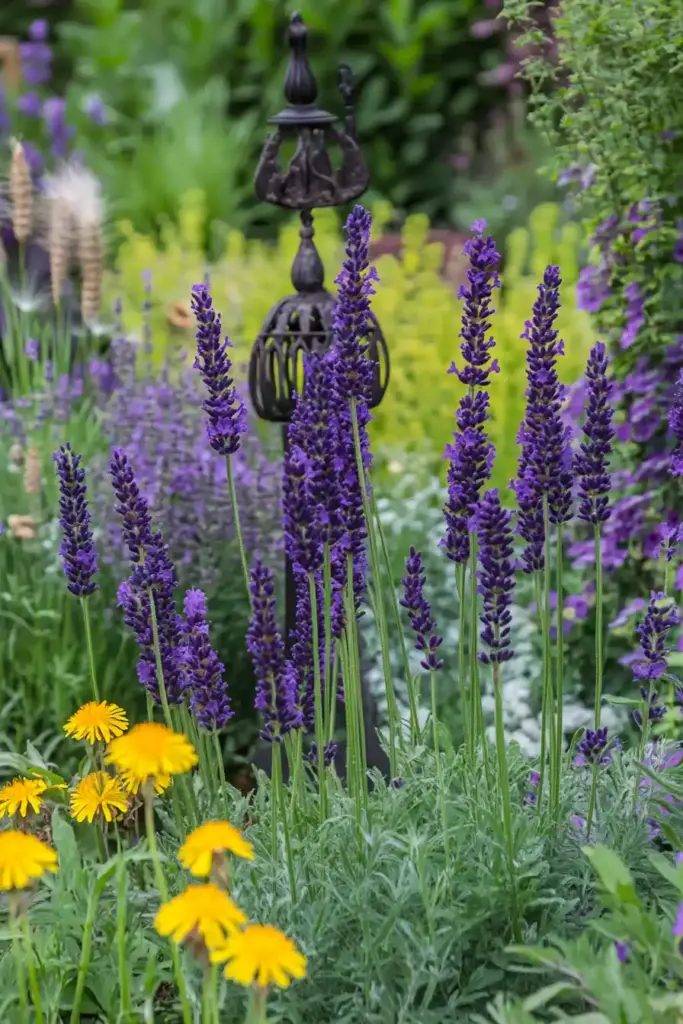
For a garden that’s both beautiful and practical, try mixing lavender flower beds with aromatic herbs like rosemary, thyme, and sage. This delightful blend not only adds visual variety but also creates a rich tapestry of scents and textures right at your fingertips.
Lavender’s soft purple blooms contrast beautifully with the deeper greens and silver tones of many herbs. Plus, both lavender and Mediterranean herbs love similar growing conditions — lots of sun, well-drained soil, and minimal watering — making them natural companions.
Tips for Combining Lavender with Herbs:
- Plant herbs and lavender with similar water needs together to simplify care.
- Use taller herbs (like rosemary) as a backdrop and lower-growing ones (like thyme) along the edges.
- Leave plenty of space between plants to encourage airflow and reduce disease risks.
- Harvest herbs regularly to keep the garden looking neat and productive.
Blending lavender with herbs gives your garden a multi-sensory experience: beauty, fragrance, and flavors you can bring right into your kitchen!
Vertical Lavender Wall
Short on garden space but big on style? A vertical lavender flower bed might be your perfect solution! Growing lavender on trellises, wooden frames, or wall-mounted planters adds a stunning vertical dimension to your outdoor space, filling the air with a delightful fragrance while saving precious ground area.
Lavender’s trailing habit and manageable size make it ideal for vertical gardening, turning blank walls, fences, or balconies into living art pieces. Plus, the sight of cascading purple blooms against a rustic backdrop is pure magic.
Steps to Create a Vertical Lavender Display:
- Choose compact lavender varieties that adapt well to containers.
- Use sturdy vertical structures like wooden trellises, pallets, or wall planters.
- Ensure excellent drainage — lavender hates wet feet!
- Place your vertical garden in a sunny spot (at least 6 hours of sunlight daily).
Whether you’re designing a small patio retreat or adding charm to a garden wall, a vertical lavender garden creates a lush, eye-catching statement that’s as functional as it is beautiful.
Formal Lavender Hedge
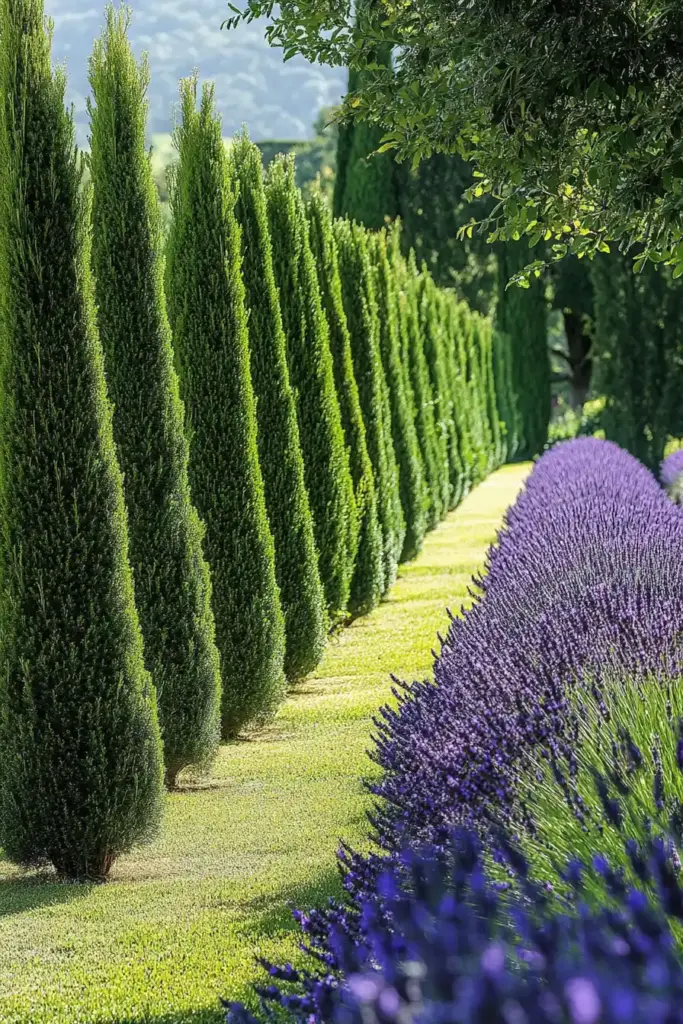
If you’re looking for a polished, timeless look, a formal lavender flower bed shaped into neat hedges is a brilliant choice. Rows of lavender planted close together create a low, fragrant barrier that brings both structure and softness to your garden design.
Lavender hedges work beautifully along pathways, around patios, or as borders for larger planting beds. Their symmetrical formality contrasts nicely with the wild, breezy nature of the blooms, offering the best of both worlds — order and natural charm.
Tips for Crafting a Lavender Hedge:
- Select dense-growing lavender types like Lavandula angustifolia ‘Hidcote’ for the best hedge effect.
- Plant closer than usual — about 12–15 inches apart — for a tight, uniform appearance.
- Trim lightly after flowering to maintain shape and promote bushy growth.
- Water young plants regularly until established, then reduce watering for tough, drought-tolerant hedges.
A formal lavender hedge not only defines your garden spaces beautifully but also buzzes with life, attracting bees, butterflies, and admirers alike!
Lavender Edging Around Vegetable Garden
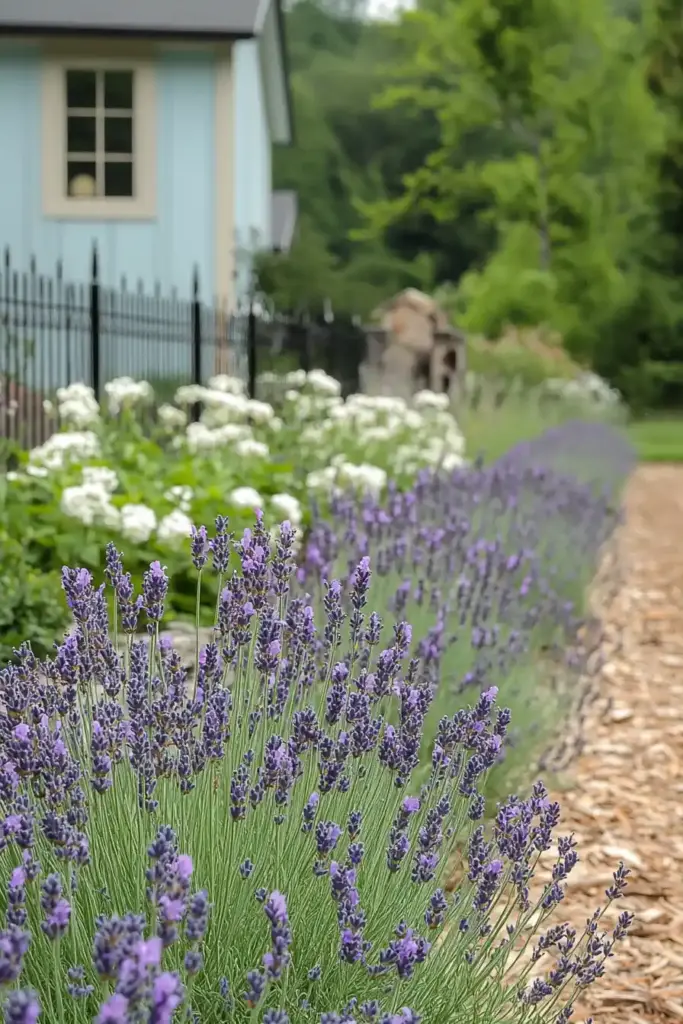
Looking for a way to add beauty and function to your veggie patch? Framing your vegetable garden with a lavender flower bed is a brilliant, multipurpose solution. The vibrant purple flowers not only create a striking visual contrast against the green vegetables but also offer real benefits to your crops.
Lavender naturally attracts pollinators like bees and beneficial insects, helping boost the productivity of your garden. Plus, its strong fragrance can deter some common garden pests — an organic win-win!
Tips for Successful Lavender Edging:
- Plant lavender along the outer edges of vegetable beds to clearly define spaces.
- Choose compact varieties to avoid shading your veggies.
- Add mulch between the rows to conserve moisture and keep weeds down.
- Make sure both your vegetables and lavender receive full sun exposure.
This approach creates a vegetable garden that’s not just functional, but downright beautiful — a space you’ll be proud to show off and enjoy throughout the growing season.
Lavender and Wildflower Mix
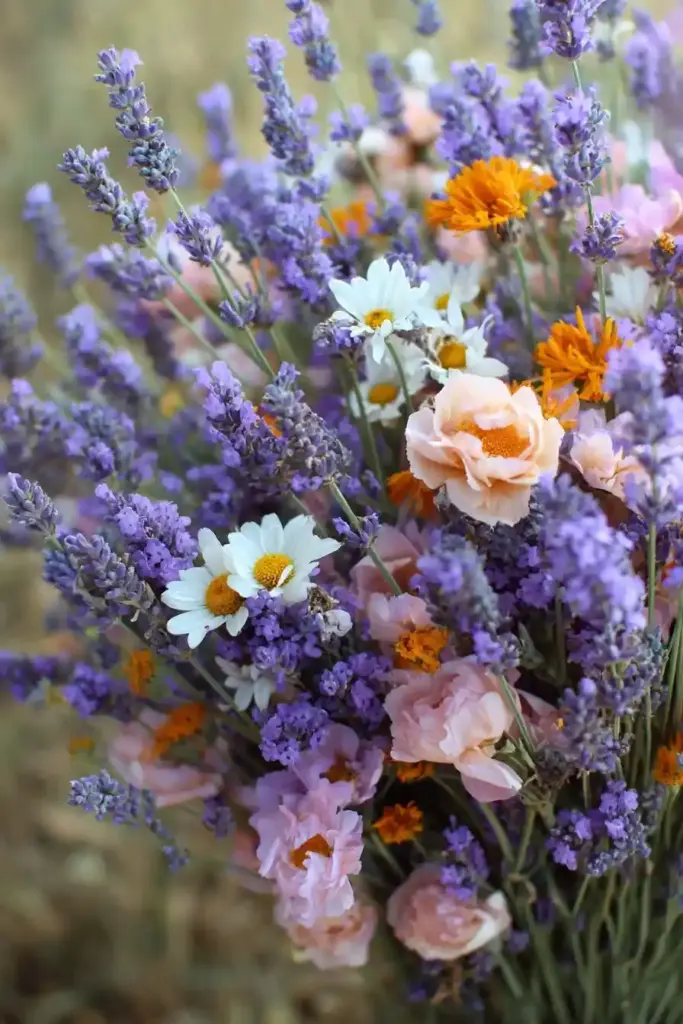
For a garden that feels vibrant, carefree, and full of life, blending a lavender flower bed with colorful wildflowers is pure magic. The elegant spikes of lavender combined with the joyful splashes of wildflower blooms create a dynamic, pollinator-friendly paradise that shifts beautifully throughout the seasons.
This mix not only looks stunning but also supports biodiversity, offering nectar and habitat to bees, butterflies, and other beneficial insects. Plus, wildflowers and lavender are both fairly low-maintenance, thriving in sunny, well-drained conditions.
How to Design a Lavender-Wildflower Blend:
- Group lavender in small clusters for strong visual impact.
- Scatter wildflower seeds (like poppies, coreopsis, or coneflowers) between and around lavender plants.
- Choose wildflowers with staggered bloom times to extend garden color.
- Allow a bit of natural self-seeding to keep the display evolving year after year.
With a lavender and wildflower mix, your garden will feel more like a living, breathing painting — colorful, fragrant, and irresistibly welcoming to nature.
Frequently Asked Questions (FAQ)
1. What is the best lavender variety for flower beds?
English lavender (Lavandula angustifolia) is one of the best varieties for flower beds due to its hardy nature, compact size, and richly fragrant blooms. Popular cultivars like ‘Hidcote’ and ‘Munstead’ are especially great choices for beginners and experienced gardeners alike.
2. How much sunlight does a lavender flower bed need?
Lavender thrives in full sun. Aim for at least 6 to 8 hours of direct sunlight per day to ensure healthy growth, abundant blooms, and a strong fragrance.
3. Can I mix lavender with other plants in the same bed?
Absolutely! Lavender pairs beautifully with other drought-tolerant plants like rosemary, thyme, sage, and many wildflowers. Just make sure they share similar sunlight and water needs for best results.
4. How do I maintain a neat lavender hedge or border?
To keep your lavender hedge or border looking tidy, lightly prune after the first bloom and again at the end of the growing season. Trim back about one-third of the plant, being careful not to cut into the woody stems, to encourage fuller, bushier growth.
5. Does lavender need a lot of water?
No — lavender prefers dry conditions once established. Overwatering is one of the most common problems. Water deeply but infrequently, allowing the soil to dry out completely between waterings.
6. Will lavender attract pollinators to my garden?
Yes! Lavender is a magnet for bees, butterflies, and even hummingbirds. Planting a lavender flower bed is a wonderful way to support local pollinator populations while enjoying a thriving, colorful garden.
Conclusion
Designing a lavender flower bed opens up a world of beauty, fragrance, and ecological benefits. Whether you prefer structured hedges, rustic raised beds, or a lively mix with herbs and wildflowers, there’s a lavender layout that suits every style and skill level.
By choosing the right setup for your space and giving your plants the sunlight and care they crave, you’ll create a stunning outdoor retreat that delights the senses and welcomes nature’s helpers year-round. Happy planting!

